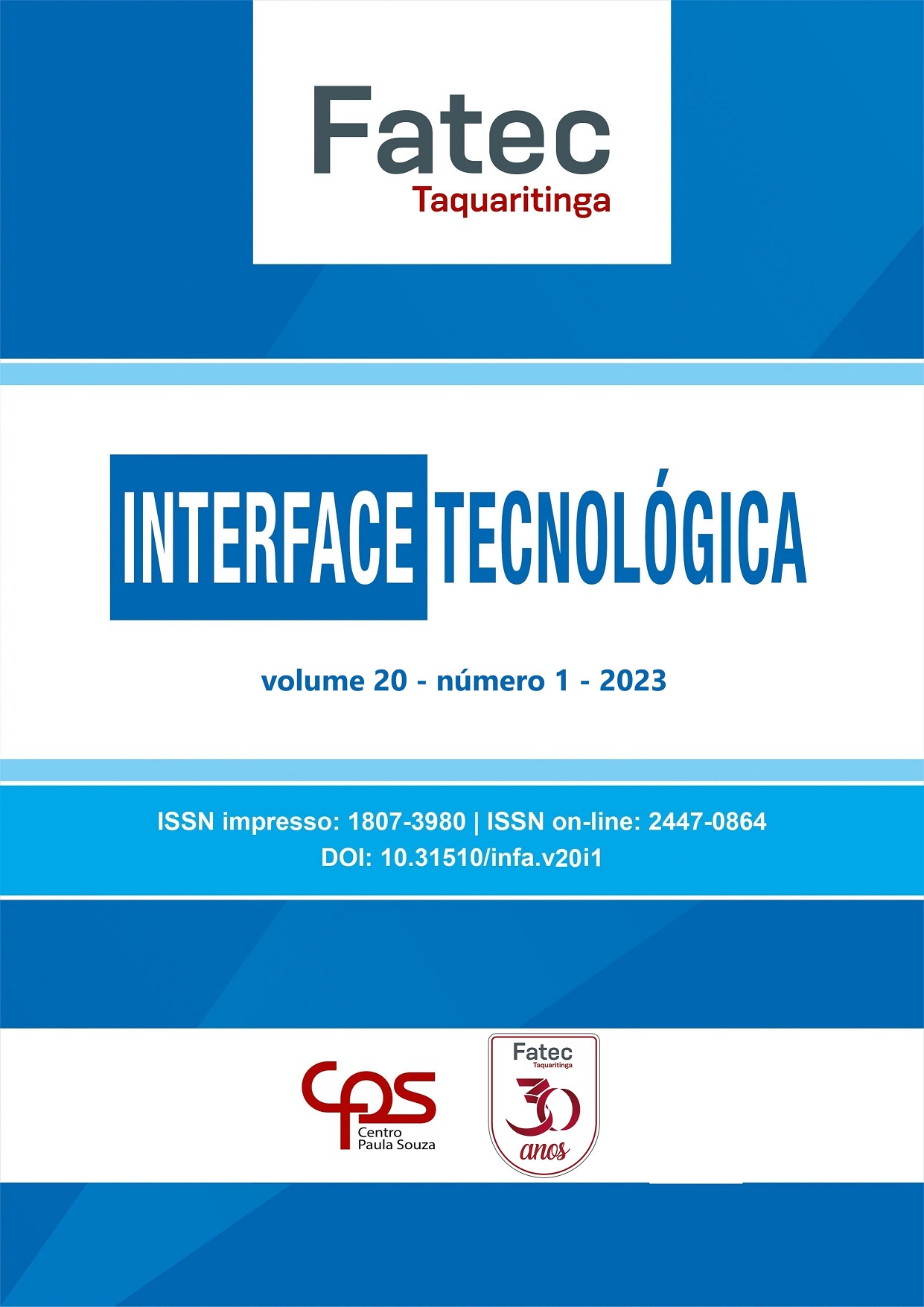APRECIAÇÃO DA ECONOMIA AMBIENTAL
a economia do bem-estar em foco
DOI:
https://doi.org/10.31510/infa.v20i1.1562Palavras-chave:
Economia Ambiental, Desenvolvimento Sustentável, Bem-EstarResumo
Os princípios centrais deste trabalho relatam que os problemas ambientais têm suas raízes no fracasso dos sistemas econômicos em maximizar o bem-estar humano, que a qualidade ambiental é importante para esse bem-estar e para os objetivos de um crescimento econômico mais tradicionalmente orientado, e que políticas eficientes podem ser alcançadas por meio de incentivos. Para a realização deste artigo utilizou-se da metodologia de revisão bibliográfica, sendo a obra Uma História Intelectual da Economia Ambiental, de David Pearce, essencial na compreensão. O conteúdo é dividido em: As Origens da Economia Ambiental na parte introdutória; Desenvolvimento Sustentável; Avaliação Econômica; Análise de Custo-Benefício; Escolha de Instrumentos de Política; e Economia Ecológica. Como conclusão, é possível apreciar as tendências no pensamento econômico-ecológico.
Downloads
Referências
ARROW, K.; SOLOW, R.; PORTNEY, P. R.; LEAMER, E. E.; RADNER, R.; SCHUMAN, H. Report of the NOAA panel on contingent valuation. Fed. Regist. 58(10):4601– 14, 1993.
BARNETT, H; MORSE C. Scarcity and Growth: The Economics of Natural Resource Availability, Baltimore: Johns Hopkins Univ. Press, 1963.
BAUMOL, W.; OATES, W. The use of standards and prices for protection of the environment. Swed. J. Econ. 73:42–54, 1971. DOI: https://doi.org/10.2307/3439132
BOSERUP E. Population and Technological Change, Chicago: Univ. Chicago Press, 1980.
BOULDING, K. The economics of the coming spaceship Earth. In Environmental Quality in a Growing Economy, ed. H Jarett, pp. 3–14. Baltimore: Johns Hopkins Univ. Press, 1966.
BOVENBERG, A. L.; MOOIJ, R. A. Environmental levies and distortionary taxation. Am. Econ. Rev. 94:1085–89, 1994.
CARSON, R. Silent Spring, Cambridge, MA: Riverside, 1962.
CHESHIRE, P.; SHEPPARD, S. Estimating the demand for housing, land and neighbourhood characteristics. Oxford Bull. Econ. Stat. 60(3):357–82, 1998. DOI: https://doi.org/10.1111/1468-0084.00104
COASE, R. The problem of social cost. J. Law Econ. 3:1–44, 1960. DOI: https://doi.org/10.1086/466560
COSTANZA, R.; CUMBERLAND, J.; DALY, H.; GOODLAND, R.; NORGAARD, R. An Introduction to Ecological Economics. Boca Raton, FL: St. Lucie, 1997. DOI: https://doi.org/10.1201/9781003040842
DALES, J. H. Pollution, Property and Prices. Toronto: Univ. Toronto Press, 1968.
DALY, H. Steady State Economics. San Francisco: Freeman, 1977.
DASGUPTA, P.; HEAL G. The optimal depletion of exhaustible resources. Rev. Econ. Stud. Symp. pp. 3–28, 1974. DOI: https://doi.org/10.2307/2296369
DIXIT, A.; PINDYCK, R. Investment Under Uncertainty. Princeton, NJ: Princeton Univ. Press, 1994. DOI: https://doi.org/10.1515/9781400830176
DUPUIT, A. J. On the measurement of the utility of public works. Transl. R Barback, in Int. Econ. Pap. 2, 1952.
EISNER, R. Extended accounts for national income and product. J. Econ. Lit. 26: 1611–84, 1988.
HAMILTON, K.; CLEMENS, M. Genuine savings rates in developing countries. World Bank Econ. Rev. 13:333–56, 1999. DOI: https://doi.org/10.1093/wber/13.2.333
HARTWICK, J. National Accounting and Capital. Cheltenham, UK: Elgar, 2000.
HARTWICK, J. Natural resources, national accounting and economic depreciation. J. Public Econ. 43(3):291– 304, 1990. DOI: https://doi.org/10.1016/0047-2727(90)90002-Y
HICKS, J. R. Value and Capital. Oxford: Oxford Univ. Press, 1939.
HOTELLING, H. The economics of public recreation. In The Prewitt Report. Washington, DC: Natl. Parks Serv, 1947.
KALDOR, N. Welfare propositions of economics and interpersonal comparisons of utility. Econ. J. 49:549–52, 1939. DOI: https://doi.org/10.2307/2224835
KAPP, K. The Social Costs of Private Enterprise. London: Spokesman Press, 1950.
KRUTILLA, J. V. Conservation reconsidered. Am. Econ. Rev. 57(4):777–86, 1967.
KRUTILLA, J. V.; FISHER, A. The Economics of Natural Environments. Washington, DC: Resour. Future. 2nd ed., 1985.
LIND, R. Discounting for Time and Risk in Energy Policy. Baltimore: Johns Hopkins Univ. Press, 1982.
OATES, W. E. Green taxes: Can we protect the environment and improve the tax system at the same time? South. Econ. J. 61:915–22, 1995. DOI: https://doi.org/10.2307/1060731
OECD (Organisation for Economic Cooperation and Development). The Polluter Pays Principle: Definition, Analysis, Implementation. Paris: OECD, 1975.
PALMQUIST, R.; ISANGKURA, A. Valuing air quality with hedonic and discrete choice models. Am. J. Agric. Econ. 81(5):1128–33, 1999. DOI: https://doi.org/10.2307/1244096
PEARCE, D. W. An Intellectual History of Environmental Economics. Annual Review of Energy and the Environment, Vol. 27, pp. 57-81, London, 2002. DOI: https://doi.org/10.1146/annurev.energy.27.122001.083429
PEARCE, D. W.; ATKINSON, G. Capital theory and the measurement of sustainable development. Ecol. Econ. 8:103–8, 1993. DOI: https://doi.org/10.1016/0921-8009(93)90039-9
PEARCE, D. W.; OZDEMIROGLU E.; BATEMAN, I.; DAY, B.; HANEMANN, W. M., et al. Stated Preference Techniques for Estimating Economic Value. Cheltenham, UK: Elgar, 2002.
PIGOU, A. The Economics of Welfare. London: Macmillan, 1920.
SOLOW, R. On the intergenerational allocation of exhaustible resources. Scand. J. Econ. 88:141–49, 1986. DOI: https://doi.org/10.2307/3440280
STIGLITZ, J. Growth with exhaustible natural resources: efficient and optimal growth paths.
Rev. Econ. Stud. Symp., pp. 123–38, 1974.
ULPH, A. The role of ex ante and ex post decisions in the value of life. J. Public Econ. 18:265–76, 1982. DOI: https://doi.org/10.1016/0047-2727(82)90006-8
WEISBROD, B. Collective consumption services of individual consumption goods. Q. J. Econ. 78:471–77, 1964. DOI: https://doi.org/10.2307/1879478
WCED (World Commission on Environment and Development). Our Common Future, Oxford: Oxford Univ. Press, 1987.
Downloads
Publicado
Edição
Seção
Licença
Direitos autorais (c) 2023 Revista Interface Tecnológica

Este trabalho está licenciado sob uma licença Creative Commons Attribution 4.0 International License.
Os direitos autorais dos artigos publicados pertencem à revista Interface Tecnológica e seguem o padrão Creative Commons (CC BY 4.0), que permite o remixe, adaptação e criação de obras derivadas do original, mesmo para fins comerciais. As novas obras devem conter menção ao(s) autor(es) nos créditos.








.jpg)




1.png)
1.png)
